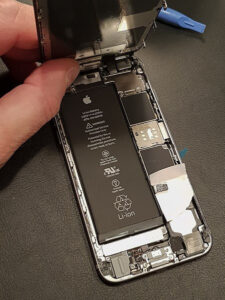
-
- [adsw_currency_switcher]
- Home
- About Us
- Catalog
- Track Your Order
- Contact Us
- Shipping & Delivery


Creating content that readers find interesting can be challenging. It takes time and requires a lot of experimentation.
While most visitors will only spend a few seconds looking at a webpage before deciding what to do next.
So, good website writing will be able to win people over and help you beat the odds.
Content written by a professional copywriter that’s optimized for the web has great SEO and will hold readers’ attention.
Good content written for the web is a good investment because it can drive traffic to your site and keep people reading.
Table of Contents
Take a moment to think about your target audience before you start writing, and who it is that will be reading your words.
Before you begin writing content, think about who your primary audience will be. What is their personality like? What are their interests? Will your secondary audience be able to influence the primary audience? How will you help them find your site?
For example, if you’re creating a website for a stock investment education and fund management company, your primary audience might be its existing clients. However, your secondary audience could include business owners, investors, or anyone who might need your services in the future. You’ll need to make sure your content is interesting and accessible to these audiences. What kinds of questions will these people ask about the topic, and why? What websites do they visit most often? What kind of information are they interested in?
People find web content through many different paths—-search engine results, social media sharing, links from other websites, and emails.
Optimizing text for search engines is particularly important when writing for the web otherwise few people will find it. Think about the audience you’re trying to reach. Consider search terms they might type into Google. Make sure to include all important keywords in your headlines and sub-headers.
Web readers have short attention spans—they’ll decide whether your site has the information they need immediately.
Structure your content lie cone or upside-down pyramid, where the most important information is presented first. When you’re trying to organise content, the most important messages should go at the top so users can see them immediately. Then, gradually drill down to the more specific, supporting facts.
For example, let’s say you’re creating a webpage about a conference. A description of the theme, date, and location of the event would appear at the top of the page.
The less important information (such as details about the conference organisers, speakers and their lecture topics, and a list of related resources) would appear at the bottom of the page.
Today’s readers prefer short sentences. If you want to reach a wider audience, make your content easy to read.
Don’t use words that are hard to understand. Keep it simple. Use nouns and verbs.
If you’re not sure what your writing level is, you can use an online readability tool to check how your texts score with. Most of the popular models in text analytics are based on the length of words and sentences in a text. Your text’s readability score is determined by a number or an education level.
Here are three tools that will scan your text and score its readability:
1.) Microsoft word
2.) Texts Document Readability
3.) Readability Test tool
Rather than using passive verbs, use active ones. Specify the subject of the sentence. For example, it is better to write “The girl ordered the noodle” rather than “The noodle was ordered.
The use of active-voice helps you to create sentences that are reader-friendly. It’s more direct. When you say “parents can purchase the phone cases.”, it’s more engaging than saying “the phone cases can be purchased.”
FAQ page is important for every website. It provides useful information to your visitor and helps them to find what they are looking for. An FAQ page on your website allows your customers to find most of their answers quickly and easily.
One way to get your audience to remember your message is with real-world stories or examples.
Here’re 2 examples:
This is the best unicorn iPhone case money can buy
Or
The Unicorn iPhone case is filled with flowing liquid as well as floating star glitters and makes your iPhone fashion and stylish.
Which version makes you more likely to buy the iPhone case?
Providing detailed product description makes it easier for customers to make purchases. Plus, product descriptions are an important component of SEO because they help to improve your website’s search engine optimisation.
The web is open and accessible to everyone—not just technical experts.
So make sure that your content is understandable for the average educated person. Avoid using jargon.
If you need to explain complex or niche ideas, you should find more ways to simplify them.
In addition to a concise statement in your article, provide links for readers to follow-up with if they want more insight into.
Here’re 2 sentences:
Investing in the stock when its share price at support level with RSI oversold condition.
Many of these terms are comprehensible only to technical terms.
The user-friendly revision would be:
Investing in the stock when its share price is lower than business value .
In order to make your website more effective at attracting customers, be sure to avoid excessive jargon.
Before you write anything, ask yourself if your target audience will be able to understand it.
Using simpler language in your writing will make you seem approachable to potential customers.
When it comes to keeping visitors engaged, you should likely strive to add variety to your content.
A word cloud is a great way to visualise which words you use the most and can help you vary your word choice. The more often you use a word, the larger it will appear in words cloud.
Have you used a certain word too frequently?
Type your text into a thesaurus.com search field to find new synonyms
Does word cloud have any ‘negative’ words? If so, you know where to look for negative words and phrases, and which ones you should replace with positive alternatives.
It’s good to put the most important information first and then make sure your text is organised in a way that makes it easy for readers to find the information they need.
Most readers of web pages won’t read the whole page—they’ll scan it to find the specific piece of information they’re looking for otherwise they’ll move on.
Don’t believe this advice? Try paying attention the next time you visit a website you haven’t seen before. Are you reading every word beginning to end or are your eyes jumping around looking for the information you want?
i.) Instead of having a long page of text, organise your content into labeled tabs. Instead of long paragraphs, use bulleted lists.
ii.) Leave space around images and other elements on your web page to make it more readable. White space makes your web page look clean and organised, which can encourage visitors to read it. This is just wasted space, and it’s a web designer’s best friend. White space can make your writing much more enjoyable to read.
iii.) In addition, it is also helpful to divide content into sections with descriptive sub-headers. It will be helpful to the page visitors to understand and navigate the page properly.
An image can be worth even more than a thousand words. Pictures, infographics, and videos can sometimes be a great way to communicate information.
Research tells us that the brain processes visual input much faster than written or verbal input. Studies have found that people can process images over 60,000 times faster than text.
When you’re explaining something complex, a chart or graph can often be more explanatory than words. So instead of struggling to make your own graphics, you can find services around you that offer this, such as Canva and Fiverr.
We recommend having at least one image on each page, and the image should be optimised for the page. Images make your website more interesting, which will draw in more readers.
A website can lead readers from one page to another, making it easier for them to find a page that meets their needs. Link certain keywords to your own related content in order to help readers discover more information about similar topics from you. This will help you keep readers engaged as they move through your content.
While the internal links you build on your own site help your SEO, they should always be relevant and helpful.If there are too many links in your text, people won’t be able to identify the one that they want. Google recommends keeping the number of links on a page to a reasonable number.
A good call-to-action is probably the most important part of any page. A good website always keeps the user in mind and makes it as easy as possible for them to complete their desired action.
Writing content for your website is not easy work. You don’t have to write perfect texts the first time — there’s always room for improvement. It’s important to monitor the performance of your content in order to further refine it. All of these tips can be used together to create awesome content.
Thank you for reading this post. If you enjoy this post, please share it with your friends or family members. Let’s get life transformed together! Many thanks.
Trending Posts





5 Secrets and Tips How to Choose and Open a Durian while Living in Singapore | 2024 Guide

Amazon Customer Centric Strategy: Why There Is An Empty Chair In Every Meeting in Amazon?
Trending Posts





5 Secrets and Tips How to Choose and Open a Durian while Living in Singapore | 2024 Guide

Amazon Customer Centric Strategy: Why There Is An Empty Chair In Every Meeting in Amazon?



8 Best iPhone Repair Service Shops in Singapore | Best of 2024

Copyright 2021 © MR Life Changer | Powered by www.mrlifechanger.com
For business collaboration/enquiries, please contact: mr.life.changer9@gmail.com